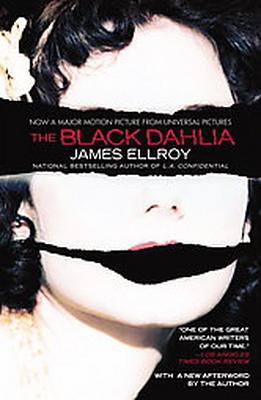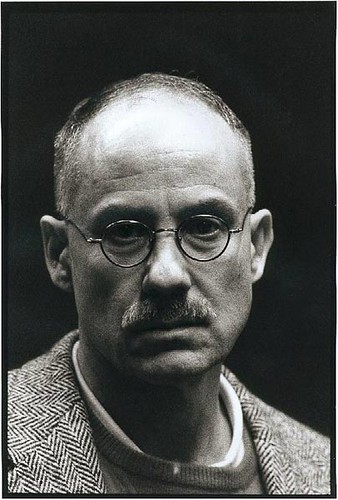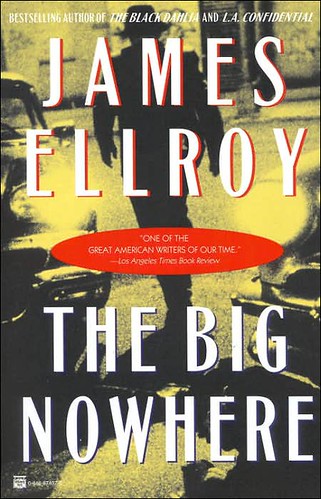
Last week, we entered the world of Ross MacDonald and Lew Archer, and took a tentative step toward James Ellroy's visceral vision of 1940s Los Angeles. Specifically, the author's terrific neo-noir and fictionalized examination of the death of Elizabeth Short, otherwise known as the Black Dahlia.
In the book -- aptly titled The Black Dahlia, natch -- Ellroy introduces the readers to Dwight "Bucky" Bleichert and Lee Blanchard, two up-and-coming cops on the L.A. police force. When the two cops -- who also both boxed before they joined the force -- face off in the ring to help promote a voting proposition to increase funding for the department, a bond is formed. Soon, the two become partners for the department's elite "Warrants" division, and Bucky finds himself immersed in his partner's day-to-day life, which includes his ravishing live-in girlfriend, Kay Lake. The three become irrevocably linked, and a strange co-dependent bond is forged. Lee supports Kay, Kay is falling for Dwight and Dwight is torn by his loyalties to his partner and his growing lust for his partner's pseudo-wife.

The dynamic is blown to bits on January 15, when while on a routine investigation Bucky and Lee stumble upon Elizabeth Short's dead and gruesomely dismembered body. Soon, the scene becomes a flashpoint for media and cops, and the story of "The Black Dahlia" murder is the talk of the town. Why was this pretty New England girl so brutally murdered? And, more importantly, why are both Bucky and Lee inexorably driven to find her killer?
What follows is a slow and thoughtful dip into the seedier realms of the human psyche, echoed by Ellroy's perverse vision of Los Angeles right after the second World War. Initially, the Dahlia murder serves as a uniting force for the Bucky/Lee team, but it soon becomes a growing crack in their equally flawed trinity with Kay. Lee, haunted by memories of his younger sister -- who was killed in a similar fashion to the Dahlia -- becomes obsessed with the case. Fueled by uppers and a twisted desire to put his dead sister's ghost to rest, Lee abandons his home and eventually his city on a quest to solve the murder.
Bucky, meanwhile, is at first reticent and dismayed at his reassignment from Warrants to the Dahlia case. But upon meeting the mysterious and sexy Madeleine Sprague on a canvass of a few LA dive bars, Bucky finds himself in a passionate and disturbing romance with the Dahlia's clown face-scarred visage and her sad demise. Madeleine's uncanny resemblance to the deceased Ms. Short, along with her own slowly-revealed machinations send the young cop into a tailspin that will eventually ruin his career, romantic prospects and obliterate his self-respect.
The Black Dahlia is a tour de force and Ellroy at his finest. It's the kind of book that not only paints a believable picture of a time long past, but also makes you long to be a part of that world, no matter how dirge-like and frightening it may seem. Ellroy's characters jump to life, whether it's through their actions or their tight, believable dialogue and mannerisms. Ellroy's L.A. is a bloody, infected scratch of a town, littered with floozies, two-faces and sad, wretched people clinging to their very existence with a slurred and medicated desperation. You may not like any of the characters in the book, you may not like any of their actions and you may be scared and shocked by what you read, but you won't be able to put it down. This book cuts to the core of human nature, and it isn't a pretty picture.
The Black Dahlia is a tale of extreme, deadly obsession and sharply focused longings and desires, with a sinful metropolis as its dangerous and malignant backdrop.
I'd end my writing here, but there are a few more notes I want to touch on. Not nearly as exciting as the book itself, though.

As some of you might know, The Black Dahlia is the first part of what Ellroy later dubbed "The L.A. Quartet," which also includes The Big Nowhere, L.A. Confidential and White Jazz. Needless to say, I'll be picking up The Big Nowhere the next time I step into a bookstore (*cough*today*cough*), and proceeding from there.

Additionally, the novel was adapted by director Brian De Palma into a piss poor movie, starring doe-eyed Josh Hartnett and a stuffy Aaron Eckhart as Bucky and Lee, respectively. With the painfully numb and monotone Scarlett Johannsen dumbing down and neutering the Kay Lake role. The only highlight was Hillary Swank, who veered a little bit off her usual path of asexual tough girls by playing the vampy and over-sexed Madeleine. But Swank couldn't save the film, which ham-fistedly delivered the novel's more nuanced messaging and truncated the novel's thoughtful and effective ending to create something overwrought and lumbering at best, laughable at worst. I considered for a moment re-casting the film and making a blog post out of it, but in the end, it's best not to think of this adaptation at all, if one can help it.
One final note, this one a tad selfish -- I first went into reading Dahlia thinking it would offer little guidance in regards to my own work -- specifically Silent City -- thinking I'd mined the crime genre enough with Pelecanos' A Firing Offense and a few other books. But it really helped me determine a huge aspect of the book that had often bothered me -- why would Pete pursue Kathy's killer so diligently? What drives him? Needless to say, reading this book helped me figure that out for myself. An added bonus to an already great reading experience.
But, as usual, enough about me. What are you reading?






2 comments:
Aside from the scripts I'm reading now, I actually just started reading THE DIVINE COMEDY. Believe it or not, I chose this - thinking it unwise at first - as my to and from work subway reading. It's going surprisingly well. I typically get through one Canto and all accompanying notes on each leg of my commute.
Dante is something that I first toyed with reading back in high school. I think I went so far as to borrow The Inferno from our high school library (or did I have it ordered from another school?). But alas, I never did read it. I think back then, I was more taken with the idea of looking like someone taking it upon himself to read such a classic than actually reading it.
Now, though, I find I'm enjoying it immensely. The translation I chose - John Ciardi - is great. I actually wonder now whether I could have appreciated or understood the text as well back in high school as I do now.
Reading Dante does raise a point in my mind. We're told (and tell others) to read as many screenplays as possible in order to better ourselves as writers. That's true. But I think that there's anoter piece to the puzzle that's not mentioned nearly as often as it should - reading classics (and other literature). There are so many great pieces of classic reading material that form the foundation of so many storylines these days that a writer would be remiss to go through his or her career and not bother to read any of them. The Odyssey is one of the most obvious examples that jumps to mind, with so much of Shakespeare coming in after that, though Shakespeare is obviously much later than Homer and Dante.
Interesting...yeah, I find a lot of people shy away from the classics or overly challenging works from different time periods. But, those works are considered classics for a reason and can inform any kind of writing.
Post a Comment